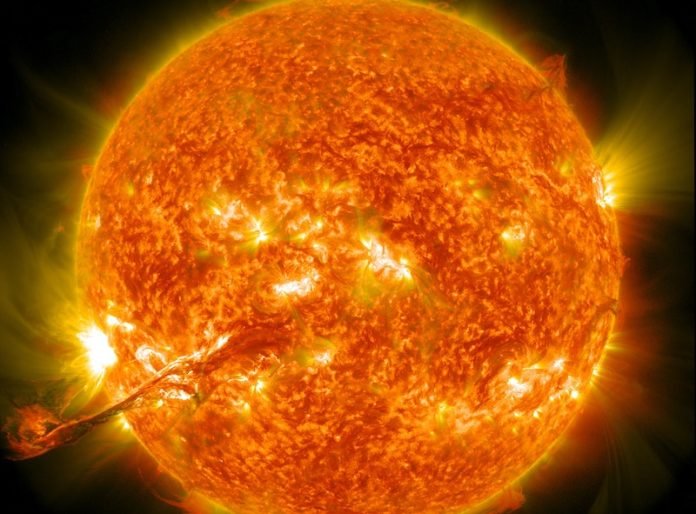
Researchers have long been puzzled by how the outermost atmosphere of the sun, called the “corona,” becomes so hot.
To answer this question, a team of physicists at the University of Colorado Boulder enlisted nearly 1,000 undergraduate students to analyze over 600 solar flares.
The Mystery of the Sizzling Corona
The sun’s corona is thought to be sizzling at temperatures of millions of degrees Fahrenheit, while the surface of the sun is much cooler, registering only in the thousands of degrees.
This puzzle has stumped even senior astrophysicists, and one of the leading theories suggests that nanoflares, small eruptions of energy, may be the cause.
However, these events are too small to detect with current telescopes, leading some to doubt this theory.
Recruiting Undergraduates for a Massive Data Analysis
To investigate the role of nanoflares in superheating the sun’s corona, the team recruited 995 undergraduate and graduate students to assist in analyzing data from solar flares collected by space instruments.
Splitting into groups of three or four, the students studied the physics of larger flares and made lengthy calculations to estimate how much heat each event could pour into the sun’s corona.
The Results
The students’ findings suggest that nanoflares may not be powerful enough to heat up the sun’s corona to millions of degrees Fahrenheit.
While this casts doubt on the nanoflare theory, researchers believe that the actual cause of the corona’s heat is still unknown.
Importance of the Study
In addition to contributing to our understanding of the sun, the study is notable for its unique approach to undergraduate education.
The hands-on research experience allowed the students to contribute to actual scientific research and gain valuable experience working collaboratively on a large-scale project.
The project also provided a sense of community during a time when many students were isolated due to the COVID-19 pandemic.
Looking Forward
While the study sheds new light on the mystery of the sun’s corona, researchers acknowledge that more work needs to be done to fully understand the phenomenon.
Future observations and research will continue to investigate the role of nanoflares, as well as other potential causes, in superheating the sun’s corona.
Overall, the study demonstrates the value of interdisciplinary collaboration in tackling complex scientific questions and the benefits of engaging undergraduate students in real-world research.
The study was published in The Astrophysical Journal.
Copyright © 2023 Knowridge Science Report. All rights reserved.



